The beautiful thing about a Macgregor Sailboat is that it has a top speed of around 60 knots (110kph). Which means that we can easily get from Lakefield to Gananoque within three hours. But there’s some important prep that you need to do first
- Remove bimini and dodger
- Fold down mast
- Remove main sheet and boom, move mast forward and secure base of mast to bow of boat
- Secure all shrouds and lines
- Pull boat out of water on trailer, draining water balast
- Secure all docking lines, bumpers, rudders, swing keel, motor, …
After you follow these steps, the boat will now easily do 60 knots, on the highway.
Here’s the boat in the first step, this doesn’t take long. This is how we were able to get under the bridge near lock 27 so quickly.
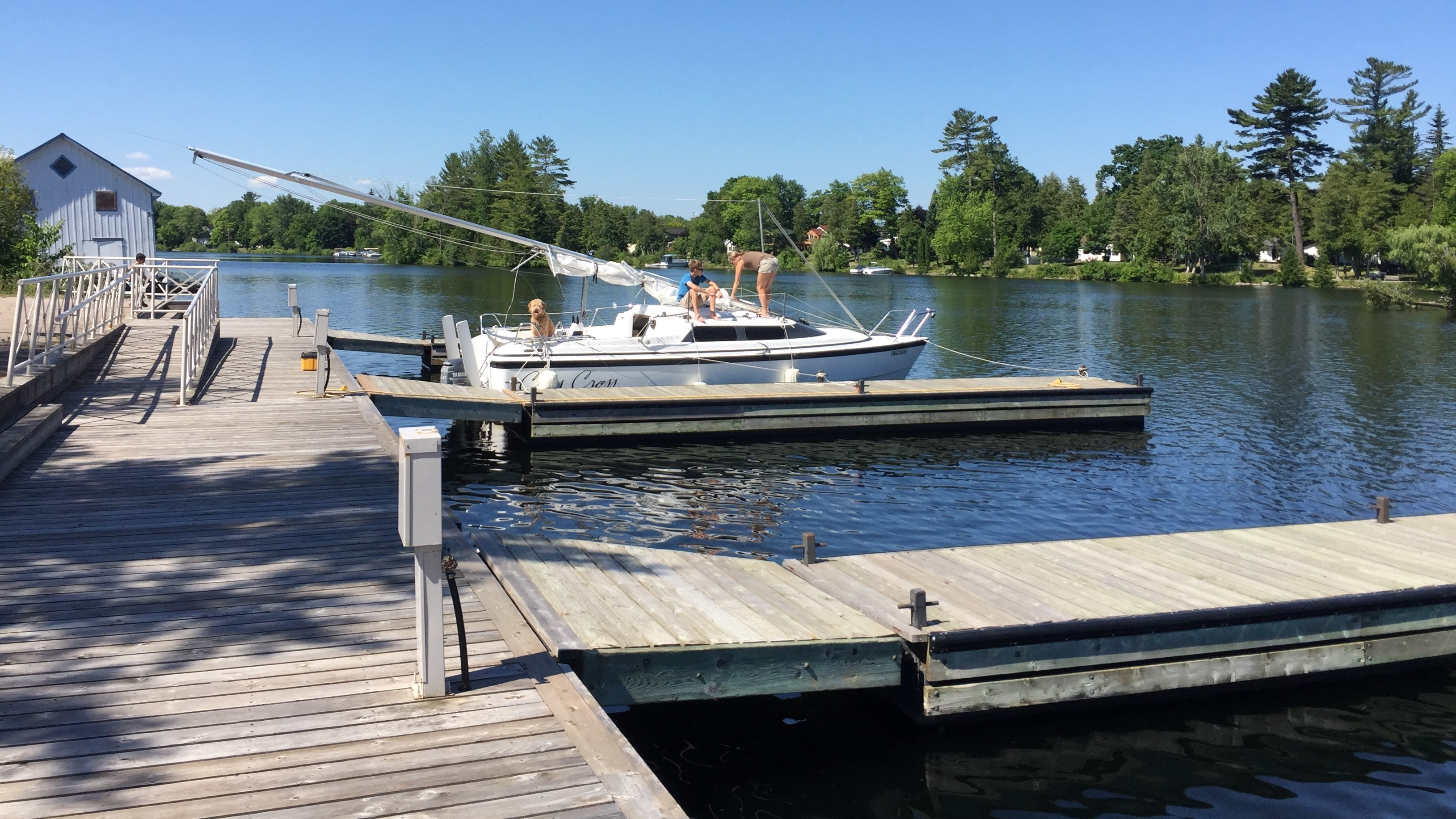
The next steps take some time. The base of the mast needs to be detached and rolled up to the bow. I think we will get better at this with more practice. It took about two hours to get the boat out of the water.
We brought the boat home and while Lori was out of town, I packed it up with all of our gear for the trip. This is another great advantage with the Macgregor sailboat, you can pack directly from your home to your boat. I didn’t have adult supervision since Lori was away so it was not well organized, at all.
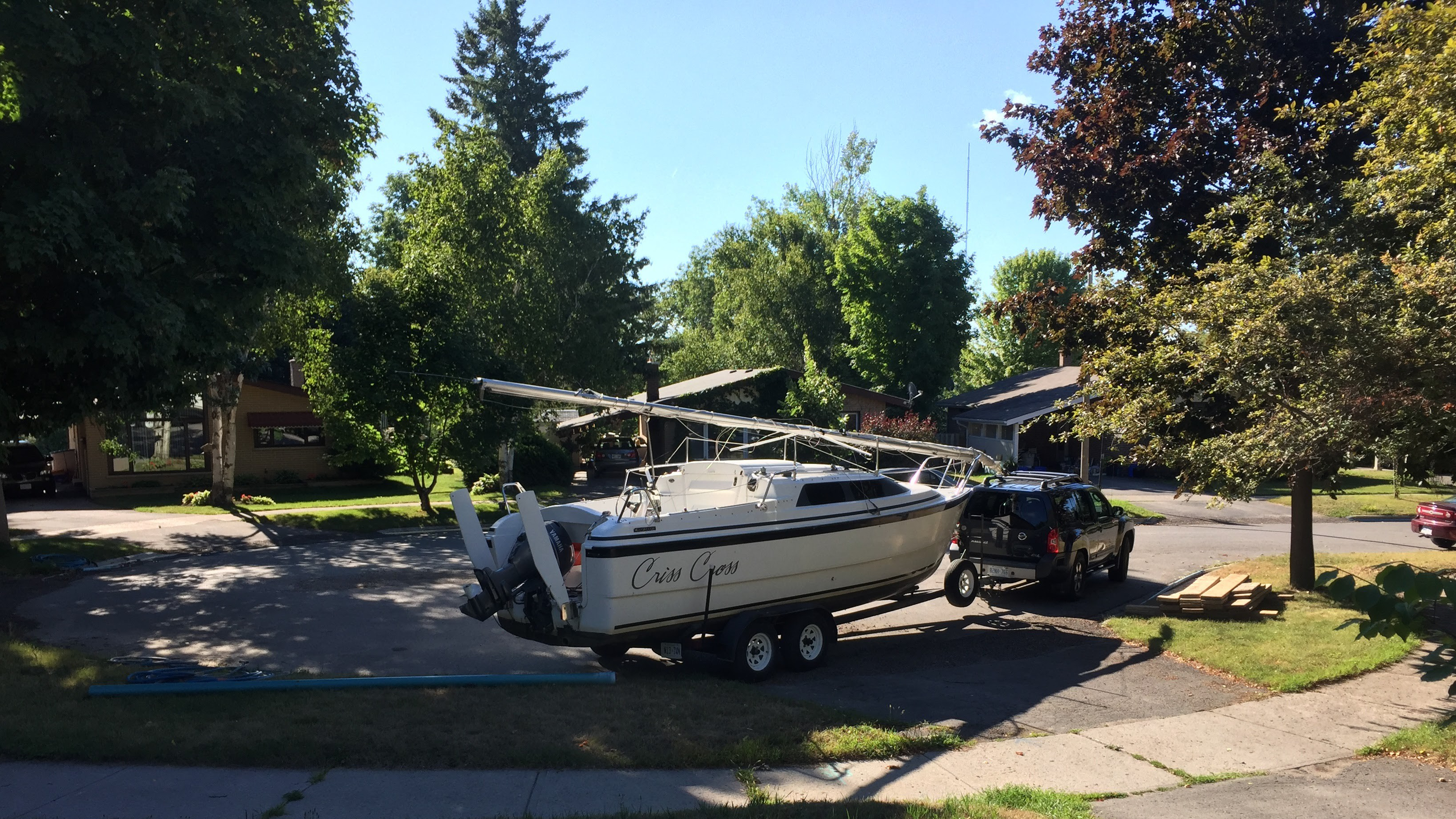
Gananoque Harbour
Made it to Gananoque around 7:30pm on Tuesday night. Beautiful spot but crazy busy! It felt like I’ve spent my life driving a car on a farm and now I’ve been plunked into downtown Toronto driving a slow un-responsive semi truck. Line ups for boat ramp, tons of traffic in harbour and lots of practice maneuvering the boat around.

Stayed overnight in a transient slip. It was also a great feeling to be surrounded by other sailboats for the first time! Our slip in Lakefield is surrounded by power boats that love to make fun of our sail. Here in Gananoque there are so many nice boats, ours looked like a dinghy compared to many of them!
Rigging the boat
Reversing the steps we did in Lakefield we slowly put the boat back together in the morning. The sloppy packing job made things slower as most of the gear we needed was buried by the boxes of gear I threw in on top. Next time the boom and the sails go back into the boat last so they are easier to get to.
While connecting the jib, the clevis pin did an impressive double back flip straight into the water. I quickly accepted the loss and went looking for the spare. Lori, however, saw it sparking in the water. It was a good time for a swim anyways and the water here is beautiful, even in the busy harbour.
Leaving the harbour, twice
After pump out saw three spots available at the three hour visitor dock so we started heading over. One big cruiser took one spot. A second big cruiser changed his mind on the second spot and then started going for the third spot so I let him through. As I made my way for second spot a big race boat came off the loading ramp and backed right into the second spot. You can see our attempts in the chart below. Trying my best to settle “road rage” during the start of our trip to relax we decided to get out of the harbour for a bit and take some quiet time to decide what to do next. We still had a large plastic bin we wanted to get back into the truck.

Going into the harbour a second time was just as unsuccessful, we got stuck behind a house boat “towing” a speed boat. It was strapped to the side. And it decided to just sit in middle of harbour blocking everyone. We squeezed past and did another pass by the docks. Everything was full now so we just gave up looking for a spot and left.
As we pulled out, for the second time, we put up the sails and shut off the engine. Let the relaxation begin.
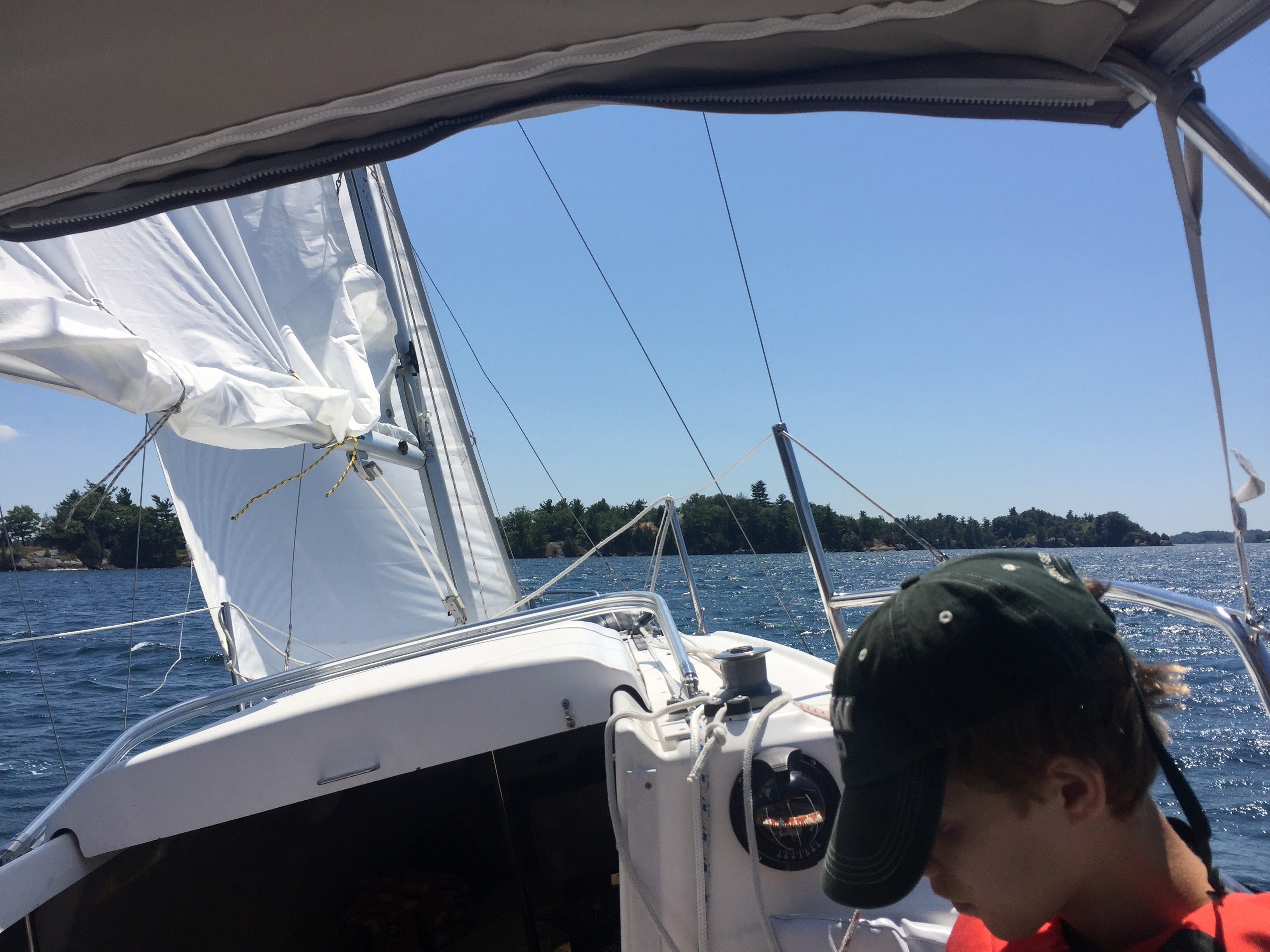
Lessons Learned:
- Spend more time packing the boat, correctly, for the trip so it’s all ready to go. I was left unsupervised during this and failed miserably. I had piled things up thinking we could organize it better once the boat was in the water. This just added to the frustration when we were in Gananoque and didn’t get a good chance to enjoy the harbour. This would have also allowed us to remove all the temporary boxes back into the vehicle as we were first putting the boat in the water.
- Pack what you need first, last. Mooring lines, bumpers, bimini, dodger, boom, boom kicker, sails.
- Busy harbours mean more aggressive drivers, being polite meant we were unable to get a spot on the dock. Not sure what I really learned here other than to avoid busy harbours. Being on the boat is my relaxation time, I’m not willing to change my style just to be first into a spot on a dock.
- We need to figure out how to reef the main properly. As you can see in picture above, it’s a mess.
- Be very careful not to drop any nuts or bolts while rigging the boat. And carry a mask, just in case! And carry extras for those times when the water is too deep, disgusting or cold for a salvage swim.
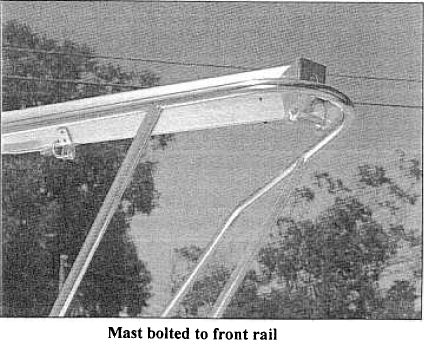
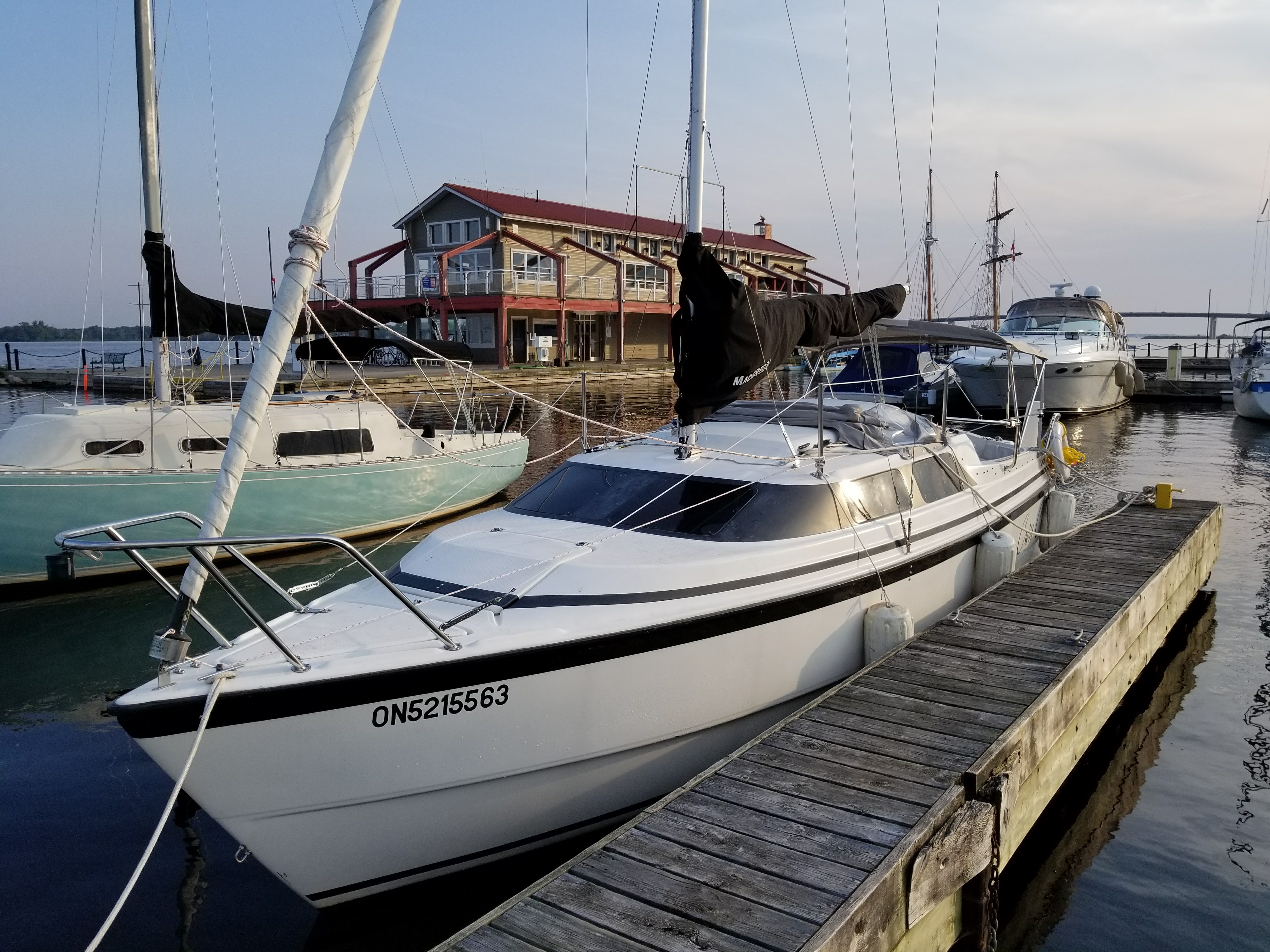

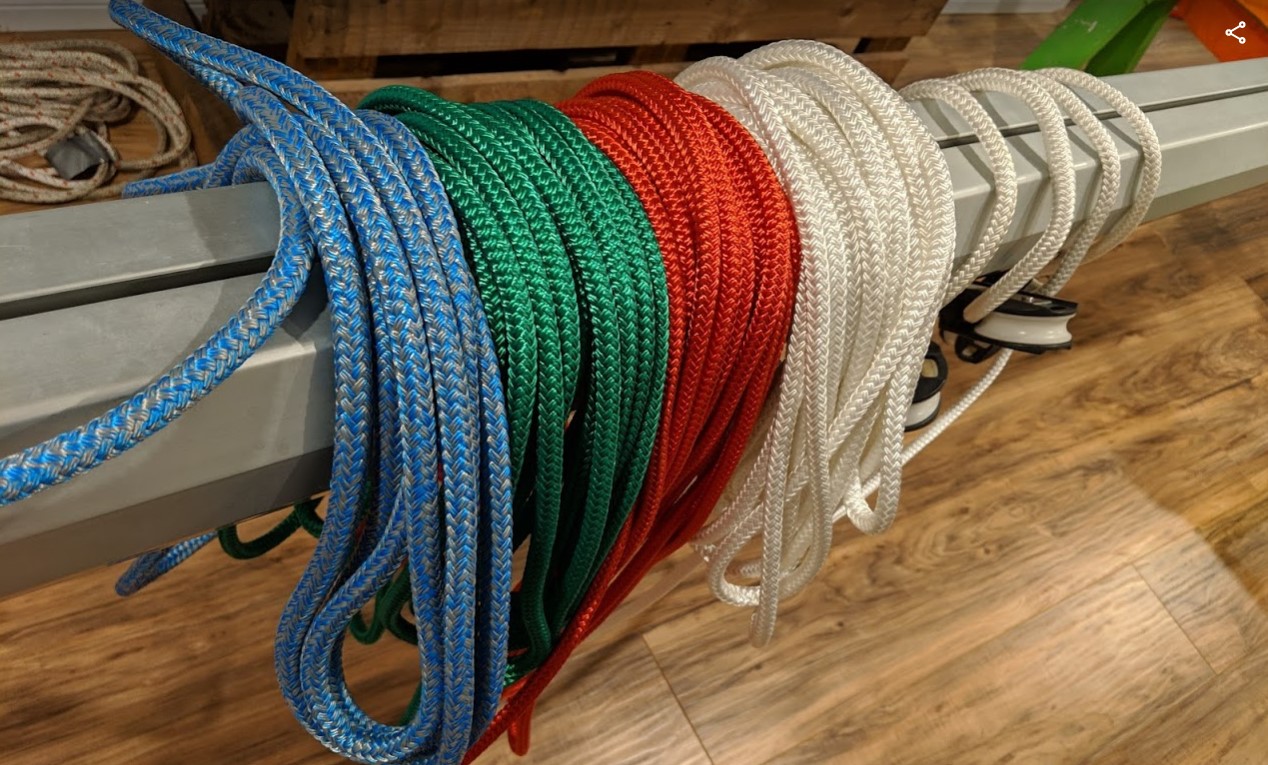
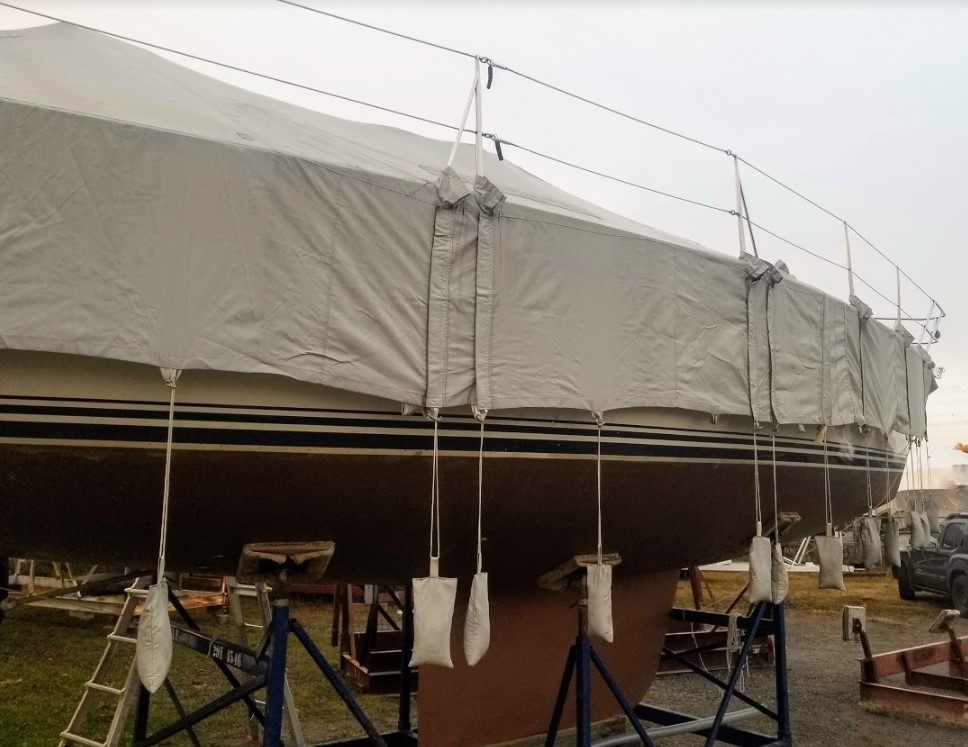
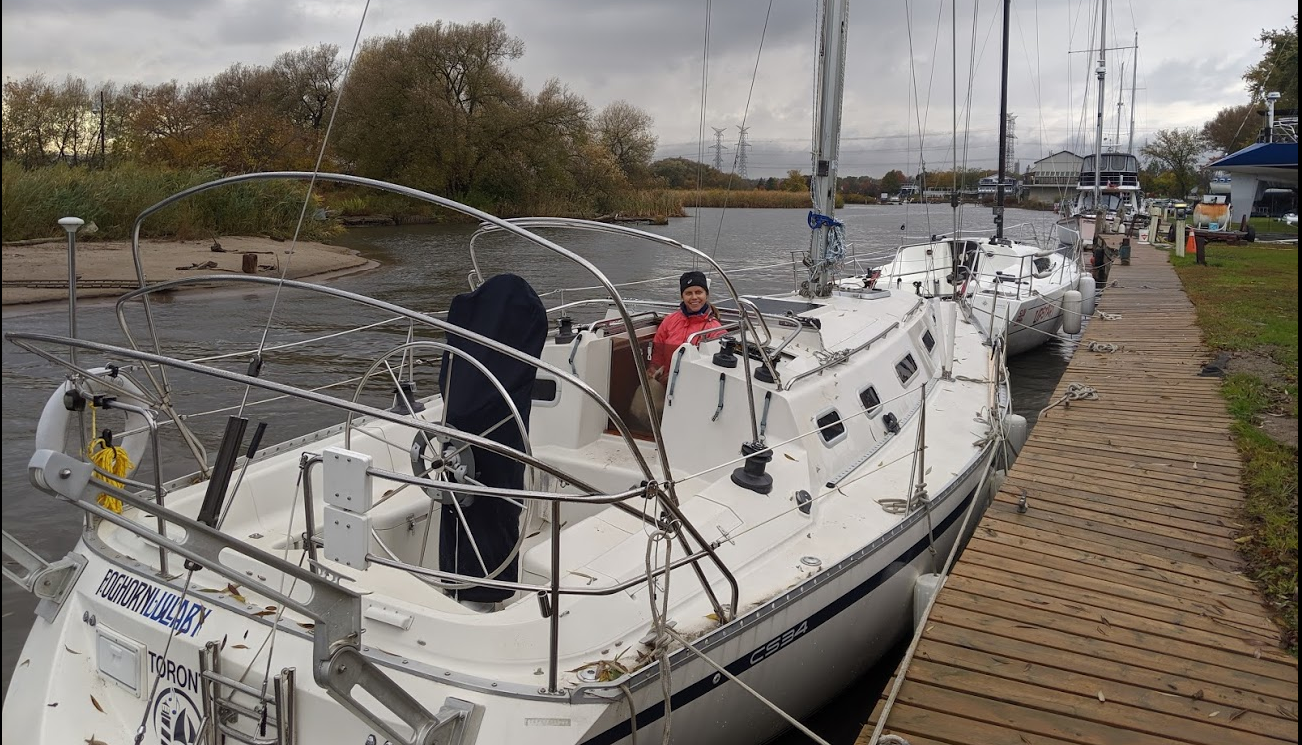
3 Pingbacks